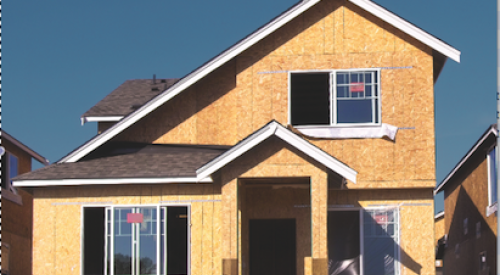| You must inspire quality from the top down and educate quality from the bottom up. - Stan Luhr |
The first thing is to start thinking about liability insurance, and do it today. Don't wait until your policy is about to expire. And do it every day. Not all the time, of course. You can't run a business if all you do is worry about insurance. But keep in the back of your mind that everything you do affects your insurance risk, and it all has consequences. Underwriters are watching. Here are some steps to consider.
(1) Institute what liability attorney Jeff Masters calls "second-generation" risk management.
During the past 10 years, Masters says, builders have been implementing "first-generation" risk management by using tools such as quality process control and alternative dispute resolution, including binding arbitration clauses in sales contracts. "These first-generation risk-management steps were an improvement over the past," he says, "but we were still depending on the ready availability of broad liability insurance coverage for builders and trade contractors. That was our ultimate risk-management tool. But with liability insurance scarce and expensive, the old model no longer works."
The second-generation approach, Masters says, must be comprehensive. "It must span the entire project life cycle, from entity formation and land acquisition all the way through sales and into customer service. And it must be integrated, with each part of the program supporting the others."
|
|
|
|
Builders must look not only at the big picture, Masters contends, but also at the details. For example, does the alternative dispute resolution in the consumer sales agreement mirror the provision in the contracts of trade contractors so that in the event of a claim, all parties land in the same forum?
He also recommends using a team of specialists to help design and execute risk reduction. The team should include an insurance broker who understands the home building industry, a risk-management attorney and a construction quality consultant. "This team approach recognizes that insurance is the most expensive way to address risk," Masters says. "The better strategy is to manage liability exposures."
The insurance renewal process has to be handled differently as well. Six months before policy renewal, he suggests, builders should begin a comprehensive risk assessment internally and in the field.
"Everything from trade contracts and construction specs to customer service tracking and vertical construction quality control needs to be analyzed, fine-tuned and presented to the underwriters in a positive manner," Masters says. "A thorough submittal tells the underwriters that the builder is sophisticated and understands liability issues and how to minimize the insurer's risk as well as his own."
(2) Develop total quality management, green building and healthy house capabilities.
The list of builders using these techniques to help the bottom line is growing, but all three also reduce the risk of a construction defect suit. And building a reputation as a quality builder, champion of the environment and protector of children's health might help with underwriters.
One tool recently developed to help with risk management also fits neatly into TQM processes. That's the "risk audit" - conducted by a forensic consultant skilled in litigation claims and quality process control. The auditor examines the as-built condition of a builder's homes and identifies and ranks the highest priorities of possible losses from litigation claims. The audit compares current construction practices with the most common construction defect claims, allowing the builder to make corrections before having to confront them in court.
California-based forensic building consultant Stan Luhr, president of Quality Built (www.qualitybuilt.com), is a risk auditor. "We rank the top 10 items that could cause a loss," he says. "Usually a builder can eliminate them from his construction methods within a couple of weeks. If you deliver a safe, durable and efficient home, you typically won't be sued. And if you can show underwriters that your company has this kind of proactive quality control in place, it's likely to save money on insurance."
Luhr emphasizes that quality control has to move through a builder's company from two directions. "You must inspire quality from the top down and educate quality from the bottom up," he says. "Without technical training to change bad habits, no QC program will succeed."
One insurer in California, ACE/Arrowhead, has mandated Luhr's quality program, which includes third-party inspections, for all builders it insures. "Driven to some degree by the insurance crisis, builders are coming to accept that quality process control needs to be a part of home building just as it is part of manufacturing," Masters says, "especially since they are held to the same strict liability standard in California as that applied to manufacturers of consumer products."
(3) Think twice before you commit to building attached housing or using products with loss histories, such as synthetic stucco (EIFS).
Many insurers will not cover builders of what they see as risky product or those that use materials with even a hint of failure potential. In many places, attached housing is the right product, dictated by land prices and market dynamics. For instance, infill locations often scream for high-density, attached housing. But you need to understand the consequences such projects can have on liability insurance availability and cost before you pull the trigger on a land buy, not after.
The liability insurance crisis certainly is dampening product innovation in home building. That's unfortunate because materials and component product innovation is a major avenue for improving the performance of homes.
Russ Hayes, vice president/legal for Atlanta-based Giant Morrison Homes, says any innovation associated with plumbing or water penetration carries the most risk in the eyes of insurers. "Anything that has to do with water, watch out. The multiplier is so great for a production builder like us. If we have a product failure, it could involve hundreds of homes before we even know about it. For us to change products, it had better be a demonstrably better mousetrap, not just a less expensive one."
(4) Investigate specialized policies to fill gaps left by liability policy exclusions.
Contractor's pollution is only one, but perhaps the most important because of its ability to protect against mold claims. Contractor's professional liability insurance can protect against defect claims arising out of professional services performed by others. It protects only the builder, not design professionals, and should not be used as a substitute for professional liability insurance carried by design professionals.
Employment practices liability insurance focuses on wrongful termination, workplace discrimination, harassment and other employment disputes. This is an area that is showing up as an exclusion in some general liability policies.
Real estate agent/broker errors & omissions insurance protects builders in consumer lawsuits alleging nondisclosure or misrepresentation by salespeople.
(5) Aggressively campaign for state and national legislative initiatives to further enfranchise builders' "right to cure" alleged construction defects.
One positive development of the last year is the emergence of state laws in California, Washington and Arizona that allow builders the right to repair defects as one curb to runaway litigation.
California's S.B. 800 is the most famous but probably the most flawed. The NAHB more closely mirrored the Washington and Arizona bills when it drafted a model bill for state home builders associations to push in legislatures around the country. Under these laws, builders are entitled to access to the home to inspect and repair any alleged construction defect.
Basically, this is another form of alternative dispute resolution, says Scott DiBiasso, director of the NAHB's state and local government affairs department. "It's an attempt to get the defects repaired before the homeowner has to resort to time-consuming and costly litigation," he says. "We think the Washington bill is the most straightforward, codifies the simplest process and does the most for both the builder and the consumer."












